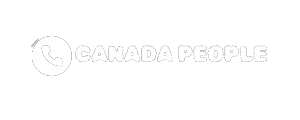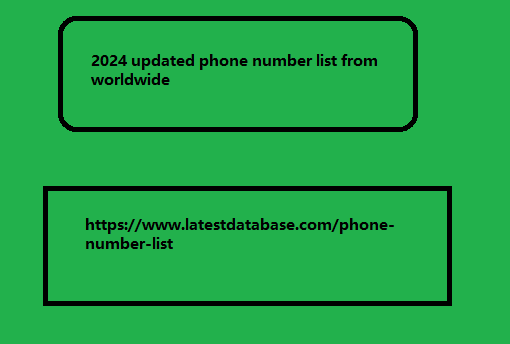When we think of the area of UX Design, the applications and websites that we interact with in the digital environment immediately come to mind. But this field of user experience studies goes much further, reaching Service Design , which focuses on solutions that are part of the simplest moments of our daily lives, such as taking the subway or going to the coffee shop.
Check out this article for a complete overview of what Service Design is, also known as Service Design. You will discover the differences between UX Design and the day-to-day work of those who work with service improvement. Enjoy your reading.
What is Service Design?
Service design is an interdisciplinary approach with meaning that is constantly evolving and its solution is designed by interconnecting the provision of a good service to the client and service providers. This process involves disciplines such as marketing, project management and user experience.
You may see two coffee shops on the same sidewalk, one next to the other, but what will differentiate the two is the service and this will make you recommend and return to the coffee shop you chose more often.
Service Design works by offering quality services that will promote customer satisfaction and generate satisfactory results for the company, such as the coffee shop you would probably choose to return to again. As exemplified by Koss Service Design, a design project incubator, which shows us the difference between Design Thinking and Service Design.
The interaction between a brand and the user is a service. To better understand this meaning, think of a drill and, imagining its function and context of use, realize that its main objective, the service, is to drill the wall. The drill was the material means to deliver and execute the service.
The term “Service Design” was first used in 1991 at the Köln International School of Design as a design discipline and, as we said before, its meaning continues to change.
The solutions follow an agile and lean methodology , where the prototype is tested quickly, to make mistakes faster and deliver the best service.
Service Design and UX Design: main differences
Service designers design solutions that involve not only the consumer, but all the people who are part of the service. And this involves thinking about the processes of this service and the devices on which the service operates. While UX Designers are more concerned with focusing on the user.
A good example is the process of paying for a purchase at the checkout of your local supermarket. Service designers think about the touchpoints in this process.
The process of interaction architecture between the customer and the purchase payment service at the checkout generates what we call a mental model , which we can define as the ecosystem of interactions that the customer faces, when faced with the complex problem that the service aims to solve, such as a payment process.
And, by making this experience digital, through service design , we bring the consumer’s mental model into virtual reality, thus making the process quickly assimilable and considered practical and functional, like this same customer buying an item online on the website or the digital product from the same market.
Service Designers in UX teams
The service is mostly not digital, or doesn’t need to be, in many cases as Martina Győrffy, UX Designer at UX Studio says on the UX Studio Team blog :
“A service is a complete process. For example, you go to the hairdresser and as a result you get a new haircut. In general, with this in mind and doing it all for a great value (which might be a new style for me in our example), a service is composed of a system containing people, artifacts and processes.”
These people and artifacts are connected to the service, for example, through the digital solution that will allow them to select the haircut they want to have and schedule the time for their cut.
What is the relationship between Service Design and Design Thinking?
Service Design deals practically with the use of design and business methodologies to improve services and this includes thinking about people, infrastructure, consumer touchpoints and the brand.
In Design Thinking , we have a design process oriented towards common sense, where we follow the stages of a project, to conceive the final idea, which must be minimally viable.
In Service Design, the solution ecosystem includes thinking about the consumer/user, people who provide the service, processes and logistics. And it uses design thinking to solve problems beyond digital products.
Both disciplines are centered on the user and aim for human-centered design, which interacts with services and solutions.
These solutions are ready on an equal footing, to act in complex phases of the problem to be solved.
Service Design (SD) and Design Thinking take into account similar analysis and tools in their process, such as the double diamond, part of the UX Design process, and empathy and persona maps .
Working with Service Design
Professionals in this area also use methodologies and tools to understand who the people involved in the service are. And currently, according to the book This is Service Design Thinking, by Marc Stickdorn , customers are increasingly seeking emotional connections with the services of brands they interact with frequently.
This makes the territory of discovery vast for a Service Designer, who will be able to listen to consumers’ pain points and needs in their routine, as well as data beyond the answers they expected to hear, through qualitative research methods.
Below are some of the responsibilities, skills, and tools used in a Service Design career.
Responsibilities and skills
Let’s talk about the responsibilities involved in the day-to-day life of a service designer.
Be interdisciplinary
You will communicate with other areas that are involved in the project and you will need to keep everyone’s communication in synergy.
To do this, having knowledge about the business and the stages of the design process will help you to have a concise service design process and demonstrate to other teams when and how they can count on you as a service designer.
Designing and engineering experience through data
Understanding and analyzing data efficiently will be essential in your daily life, so that you can design experiences through data and information that match the reality of the service and people connected to the service offered.
Using this data, collected through research, together with company professionals and/or UX Research people , you will also be able to map and monitor metrics that will help the business understand the impact of the service.
Facilitate decision-making processes
Decision-making processes between areas interested in the Service Design project are constantly in communication and you can become the figure who will help areas from different sectors to make decisions and define a starting point.
Through service design tools, you will be able to understand who the parties involved in the decision-making process are, primarily, secondaryly and externally, to be strategic and be able to make the process valuable to reach the service design.
Present ideas visually
Presenting your ideas visually is one of your most important responsibilities. This is because when we can translate ideas through diagrams, images and mind maps, we can make our problem-solving process democratic , involving technical areas and, especially, decision-makers, directly connected to the business in which the service is provided.
Manifesto 55, an organization founded by facilitators, has a guide to help you make your ideas visual.
Tools used
You may need some tools to use during the stages of your design process. Here we will introduce you to 3 Service Design tools that are present on the Service Design Tools website.
- Service Safari – Practice empathy by using the service and understanding perceptions and needs. This will be documented to support and inspire the team during project development.
- System Map – Understand who are the actors connected to the service, and components involved in the final delivery. The system map is a single-location representation and helps to understand the dynamics of the service and its opportunities.
- Service Blueprint – This diagram will help you understand the service delivery process. It will allow you to visualize actions that occur in the plane that is below and above the visibility of the service, actions that occur in the user’s field of vision, and actions that occur in the back office (below visibility). These actions can be performed by humans, organizations, or institutions.
How to be a Service Designer?
The initial starting point for landing a job in service design vacancies is to have good knowledge of the UX Design process.
According to the Glassdoor website, which provides information on careers, selection processes and market experiences, the average salary for a service designer is R$6,553. This can vary depending on the level of knowledge in the specialty and the length of time in the field.
Service designers will work to discover the customer’s touchpoints throughout their journey, which we can understand as the time they spend using a service, from start to finish. Your day may start with alignment meetings with your UX team, and then you will work with the team to begin the design process, towards the service.
….



